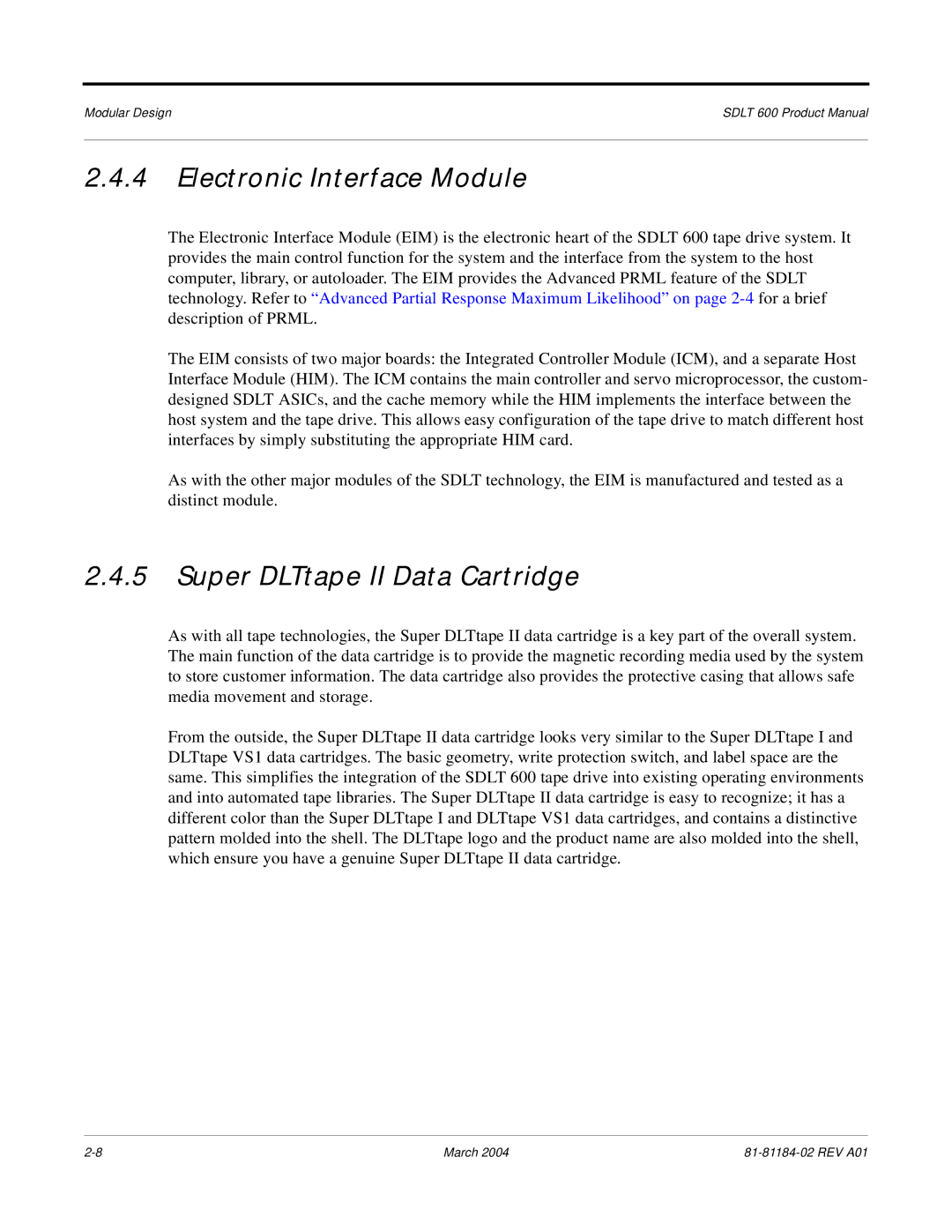
Modular Design | SDLT 600 Product Manual |
2.4.4Electronic Interface Module
The Electronic Interface Module (EIM) is the electronic heart of the SDLT 600 tape drive system. It provides the main control function for the system and the interface from the system to the host computer, library, or autoloader. The EIM provides the Advanced PRML feature of the SDLT technology. Refer to “Advanced Partial Response Maximum Likelihood” on page
The EIM consists of two major boards: the Integrated Controller Module (ICM), and a separate Host Interface Module (HIM). The ICM contains the main controller and servo microprocessor, the custom- designed SDLT ASICs, and the cache memory while the HIM implements the interface between the host system and the tape drive. This allows easy configuration of the tape drive to match different host interfaces by simply substituting the appropriate HIM card.
As with the other major modules of the SDLT technology, the EIM is manufactured and tested as a distinct module.
2.4.5Super DLTtape II Data Cartridge
As with all tape technologies, the Super DLTtape II data cartridge is a key part of the overall system. The main function of the data cartridge is to provide the magnetic recording media used by the system to store customer information. The data cartridge also provides the protective casing that allows safe media movement and storage.
From the outside, the Super DLTtape II data cartridge looks very similar to the Super DLTtape I and DLTtape VS1 data cartridges. The basic geometry, write protection switch, and label space are the same. This simplifies the integration of the SDLT 600 tape drive into existing operating environments and into automated tape libraries. The Super DLTtape II data cartridge is easy to recognize; it has a different color than the Super DLTtape I and DLTtape VS1 data cartridges, and contains a distinctive pattern molded into the shell. The DLTtape logo and the product name are also molded into the shell, which ensure you have a genuine Super DLTtape II data cartridge.
March 2004 |
